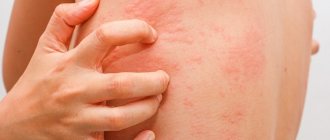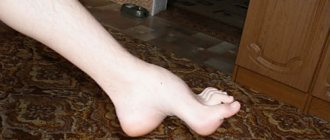Myopathies represent a very large group of diseases with different causes, different courses and prognosis. A common feature is muscle weakness—affecting the muscles in the thighs and arms, although facial muscles may also be weakened. Sensory disorders do not occur in myopathies. Muscle weakness is usually bilateral and symmetrical from the outset, that is, similar on both sides of the body - left and right. Myopathies can be genetic or acquired. Genetically determined myopathies include, for example, muscular dystrophies, which are characterized by abnormal muscle cell structure (eg, due to a congenital deficiency of any of its components). On the other hand, acquired myopathies have inflammation (inflammatory myopathies), may accompany endocrine diseases (eg, hypothyroidism), and may also result from muscle damage by certain drugs or toxic compounds (eg, alcohol).
How common is myopathy?
The term "myopathy" is very broad and covers many different diseases. Therefore, the overall incidence of myopathy is difficult to determine. As a rule, myopathies are rare diseases. How does myopathy manifest? The main symptom of myopathy is muscle weakness. This most often affects the muscles of the thighs and arms - patients, for example, have difficulty climbing stairs, rising from a sitting position, sitting, or performing activities with raised arms (for example, hanging curtains or doing hair). Muscle weakness may be accompanied by pain. Some myopathies involve the muscles of the face or throat. There may be drooping eyelids, decreased mobility of the eyeballs, slurred speech, and difficulty swallowing. Sometimes the neck muscles are weak - then the head cannot be held up. In some myopathies, weakness of the respiratory muscles may occur, leading to shortness of breath. Sometimes with myopathies there are problems with muscle relaxation, for example, the patient cannot quickly unclench his fingers after clenching a fist. With progressive and long-term myopathies, muscle atrophy occurs. These symptoms may be accompanied by signs of damage to other tissues and organs outside the muscular system.
Symptoms
Photo: nervzdorov.ru
Myopathy begins with the appearance of slight muscle weakness in the limbs. Fatigue sets in faster when walking or other physical activity than before the onset of the disease. It becomes more difficult for such people to cover long distances, so they often have to take short rest breaks in order to continue their journey with renewed vigor. Next, muscle atrophy joins the growing weakness, resulting in deformities of the limbs. As a rule, atrophic changes are observed in the proximal (which are closer to the body) parts of the arms and legs. Because of this, the distal limbs may appear hypertrophied. This phenomenon is called “pseudohypertrophy”. As muscle weakness progresses, it becomes difficult to jump, run, or walk up stairs.
The characteristic appearance of a patient with myopathy gradually develops: wing-shaped shoulder blades, drooping shoulders, a protruding abdomen and increased lumbar lordosis, due to which the so-called “wasp” waist is formed. In addition, a “duck” gait is observed (movement is accompanied by swaying to the sides).
In addition, myopathies may be accompanied by damage to the facial muscles. You can suspect the involvement of facial muscles in the pathological process when a person cannot stretch out his lips, puff out his cheeks, frown or smile. Damage to the orbicularis oris muscle is accompanied by the development of dysarthria due to difficulty pronouncing vowel sounds. Dysarthria itself refers to a speech disorder, which is expressed in difficulty pronouncing certain words, individual sounds, syllables, or in their distorted pronunciation.
Damage to the respiratory muscles is accompanied by impaired ventilation of the lungs, which leads to congestive pneumonia. This form of pneumonia is one of the most severe, difficult to treat and quickly leads to the development of respiratory failure.
There is also evidence of the possibility of damage to the heart muscle. In this case, cardiomyopathy develops, which leads to the development of heart failure.
How does a doctor diagnose myopathy?
The doctor takes the patient's medical history and performs a test, which usually shows paresis of the muscles (hips, arms, sometimes the face), sometimes also weakening of the reflexes caused by tapping with a neurological hammer. He then orders additional tests. Typically these are laboratory blood tests, including electrolyte, TSH, inflammation and creatine kinase levels. It is a sensitive indicator of muscle breakdown and is elevated in most patients with myopathy. It can also be increased in diseases where muscle damage is caused by nerve damage, such as amyotrophic lateral sclerosis or polyneuropathy, and sometimes in healthy people, for example after exercise or muscle injury. Electromyography (EMG) is another additional test important for diagnosis. EMG can confirm myopathy or indicate another disease that causes similar symptoms. A definitive diagnosis of myopathy, that is, determination of its type and cause, is most often possible after a muscle tissue test (for this purpose, a small piece of tissue is taken under local anesthesia for microscopic examination) or genetic analysis from a blood sample taken from the patient. Genetic testing is only available for some genetic myopathies.
Description
Myopathy is a disease that occurs as a result of disturbances in the metabolism and structure of muscle tissue, resulting in a decrease in the strength of the affected muscles, as well as a limitation of motor activity.
Myopathies belong to a group of neuromuscular diseases, which are characterized by dystrophic damage to muscle tissue with atrophy of individual fibers (myofibrils) in some places. In addition, atrophied myofibrils are replaced by connective or adipose tissue. This leads to the loss of the muscles’ ability to contract, which causes the appearance of muscle weakness in the clinic of the disease, as well as limitation of motor activity.
There are two main forms of the disease:
- Primary myopathies, which are often hereditary. In turn, they are divided into the following types:
- congenital myopathies that develop in infancy;
- early childhood myopathies that develop at the age of 5-10 years;
- juvenile myopathies that develop in adolescence.
- Secondary myopathies occurring against the background of other diseases.
For example, against the background of endocrine disorders (Cushing's disease, hyperaldosteronism, hyperparathyroidism, hypo- and hyperthyroidism), chronic intoxication (alcoholism, drug addiction, work in enterprises with occupational hazards), severe chronic diseases (chronic renal failure, chronic liver failure, chronic obstructive pulmonary disease, heart failure), as well as tumor processes.
Primary forms of myopathy are much more common than secondary ones. Therefore, it is extremely important when planning a pregnancy to consult a geneticist in order to identify the risk of developing this pathology in the unborn child.
Based on which part of the body muscle weakness is more pronounced, the following types of myopathy are distinguished:
- proximal - the pathological process is located in those parts of the limbs that are located as close as possible to the body (for example, in the case of the arms, these are the shoulders);
- distal - the muscles of the limbs are affected, which are at the maximum distance from the body (for example, in the case of the legs - the calf muscles);
- mixed - has symptoms of proximal and distal forms of the disease.
Primary myopathies have a poor prognosis. Especially if the first symptoms appeared in early childhood. The involvement of the heart muscle and respiratory muscles in the process is also important. In this case, the prognosis of the disease worsens. The most favorable outcome is observed with secondary myopathies, since in this case it is easier to achieve success in treating the underlying disease that caused the development of myopathy.
How to treat myopathy?
As in the case of polyneuropathy, causal and symptomatic treatment can be distinguished. Causal treatment is possible, for example in inflammatory myopathies. In these cases, glucocorticoids (steroid hormones), immunosuppressants or intravenous immunoglobulins are used. Causal treatment of myopathy arising from endocrine diseases (eg, thyroid disease, hyperparathyroidism, or hyperadrenocorticism) involves treatment of hormonal disorders. For drug-induced or toxic myopathy, you should try to stop taking the medication or stop exposure to the toxic compound that caused the muscle damage. In rare cases of genetic myopathy, the essence of which is the absence of one of the enzymes necessary for the proper functioning of muscles, causative treatment is possible in the form of administration of the missing enzyme.
Symptomatic treatment is primarily rehabilitation. In the event that rapid muscle relaxation is a burdensome experience for a patient, pharmacological treatment is used to alleviate the symptom. Some muscle diseases affect other organs, such as the heart muscle. Then it is important for patients to undergo regular examinations with a cardiologist. In addition, genetic counseling should be given to patients with genetic myopathy.
Causes of myopathy
Giving the reasons why myopathy appears, experts identify a primary type of pathology, the characteristic feature of which is the genetic cause of the disease and a group of triple disorders, the appearance of which provokes the presence in the body of chronic pathology in the functioning of other organs.
Causes of myopathy:
- The hereditary cause of myopathy manifests itself regardless of the effect of environmental factors on the body. A prerequisite for the development of this form of the disease is the presence in the family of close relatives suffering from this disease. This group of pathologies manifests itself in infancy, childhood and adolescence, and is characterized by a difficult course and the fact that it is difficult to respond to therapeutic influences.
- Among the secondary causes of myopathy, experts name hormonal imbalance, the presence of infectious, bacterial, parasitic or viral damage to muscle structures, pathologies in the process of producing thyroid hormone. The onset of the disease causes a disruption in the production of collagen, the metabolism of purines, lipid cells and glycogen in the muscle tissue area.
The appearance of acquired deviations can be triggered by the development of tumor structures, vitamin deficiency, heart or liver failure and be a consequence of chronic intoxication of the body.
Stages and degrees of myopathy
Doctors distinguish primary and secondary stages of myopathy. At the same time, the primary variety, according to their statement, arises mainly against the background of genetically determined disorders, manifested in the form of:
- Pathologies detected during puberty.
- Diseases, the development and appearance of symptoms of which occur within 5-10 years.
- Diseases detected in infancy.
The second stage of the disease is characterized by the fact that it occurs against the background of various disorders described above occurring in the patient’s body. In addition to the described types of pathology, experts distinguish such degrees of myopathy as:
- Duchenne disease, a characteristic feature of which is damage to the muscles in the hip joint and buttock tissues, the disease affects male children and threatens a complex of complications from loss of the ability to move and retardation in intellectual development to death;
- Becker’s pathology is characterized by the appearance of excessive tissue development in the calf area on the patient’s legs, most often found in patients over 20 years of age;
- juvenile disease, equally often found in patients of both sexes aged 20-25 years, is distinguished by degradation processes occurring in the torso and pelvis, and is often detected by the characteristic curvature of the spinal column;
- the Landouzy-Dejerine variety is characterized by a slow pace of development and the absence of a threat to the patient’s life, but can be found in both children and adult patients;
- Welander-Kugelberg pathology occurs in the pelvis and lower extremities in patients of younger age groups, and is distinguished by the appearance of a characteristic “duck gait” during development.
The disease has a negative prognosis if the pathology is congenital or damages the respiratory muscles and heart muscles.
Prevention of myopathy
Prevention of myopathy includes conducting a thorough examination of the woman during pregnancy, consulting with a genetics specialist, and following the recommendations prescribed by the doctor. Prevention of acquired myopathy includes treatment for metabolic disorders, treatment of the endocrine glands and infections present in the body, limiting the effect of toxic drugs on the body, and the use of medications whose action is aimed at strengthening the immune system.
Inflammatory myopathies: dermatomyositis/polymyositis
What are inflammatory myopathies: dermatomyositis/polymyositis?
Inflammatory myopathies (dermatomyositis, polymyositis) are a group of rare autoimmune diseases characterized by inflammation of striated muscles with the development of weakness in the shoulder and pelvic girdle, torso; swallowing disorders may develop. Damage to the skin, joints, and internal organs is also possible.
The following symptoms may occur with dermatomyositis/polymyositis:
- Muscle weakness that progresses over several weeks or months (difficulty walking up stairs, getting up from a chair or squatting, combing your hair, taking clothes off over your head, changing body position from horizontal to vertical).
- Muscle pain (similar to pain after intense physical activity).
- Rash on the face, on the back of the hands (above small joints), as well as over large joints (knees, elbows), in the décolleté and shawl area, on the outer surfaces of the thighs. In similar areas, ulcers may form. Cracks on the side surfaces of the fingers.
- Swelling around the eyes.
- Swallowing problems: choking when eating liquid or viscous food, liquid getting into the nose, food getting stuck in the throat.
- Voice change – hoarseness and/or nasal sound.
- Shortness of breath on exertion, dry cough or cough with a small amount of sticky sputum.
- Pain and swelling of the joints. Discoloration of fingers in the cold.
- Fever.
It is well known that in some patients with dermatomyositis and, less commonly, polymyositis, the cause of the development of an autoimmune disease may be a malignant tumor. Therefore, patients undergo a thorough examination to exclude a malignant tumor.
To confirm the diagnosis, laboratory tests are prescribed - a biochemical blood test to detect elevated levels of muscle enzymes, primarily creatine phosphokinase (CPK). In approximately 1/3 of patients, myositis-specific antibodies are detected - a-Jo-1, which also have important diagnostic value. Needle electromyography is performed to identify signs of muscle damage and assess the activity of the process. In difficult cases, a muscle biopsy may be required. Also, patients with inflammatory myopathies often undergo computed tomography of the chest to look for signs of interstitial pneumonia.
Who should consult a rheumatologist?
- Progressive weakness in the muscles of the shoulder and pelvic girdle.
- Muscle pain.
- Swallowing disorder.
- The presence of periorbital edema, pink-purple rash on the face, over small and large joints, in the décolleté and shawl area, worsening in the sun.
- The presence of interstitial pneumonia and muscle weakness and/or joint pain and/or skin changes - redness over the joints and cracks on the fingers.
- Increasing the level of “muscle” enzymes, primarily CPK.
Treatment of inflammatory myopathies
The goal of treatment of inflammatory myopathies is to restore muscle strength, improve and stabilize lung function (in case of damage), disappearance of skin rashes and healing of skin defects, and relief of arthritis. With dermatomyositis and polymyositis, muscle strength is restored very slowly, over several months.
The key to the success of CM treatment is the cooperation of the patient and the doctor, strict adherence to recommendations, as well as careful attention to your well-being, monitoring tests and keeping a diary.
Specialists involved in diagnosis and treatment at the institute: employees of the laboratory of microcirculation and inflammation
Make an appointment with a specialist:
- by phone, +7
- by filling out the feedback form
- receive ]in absentia[/anchor]









